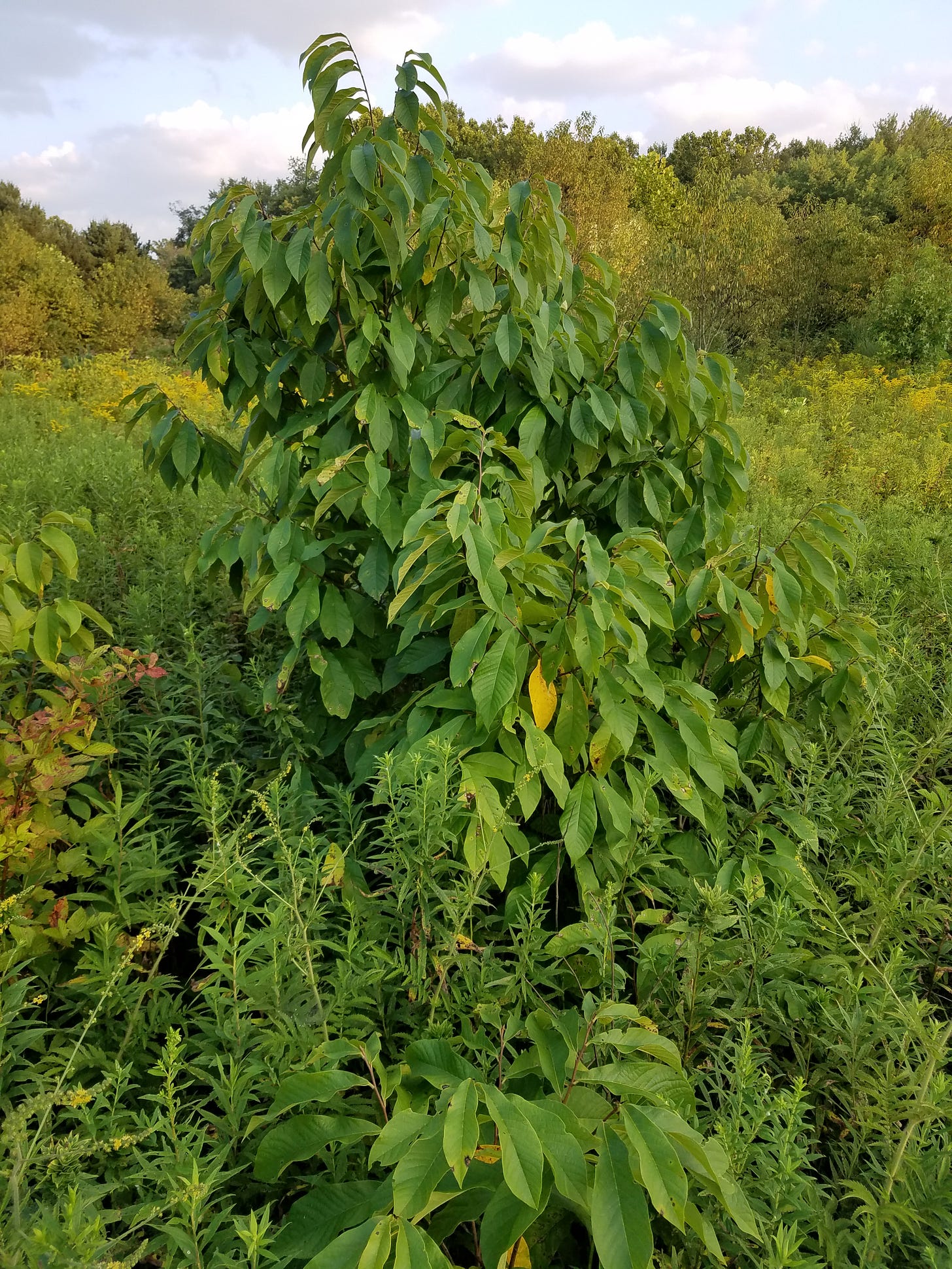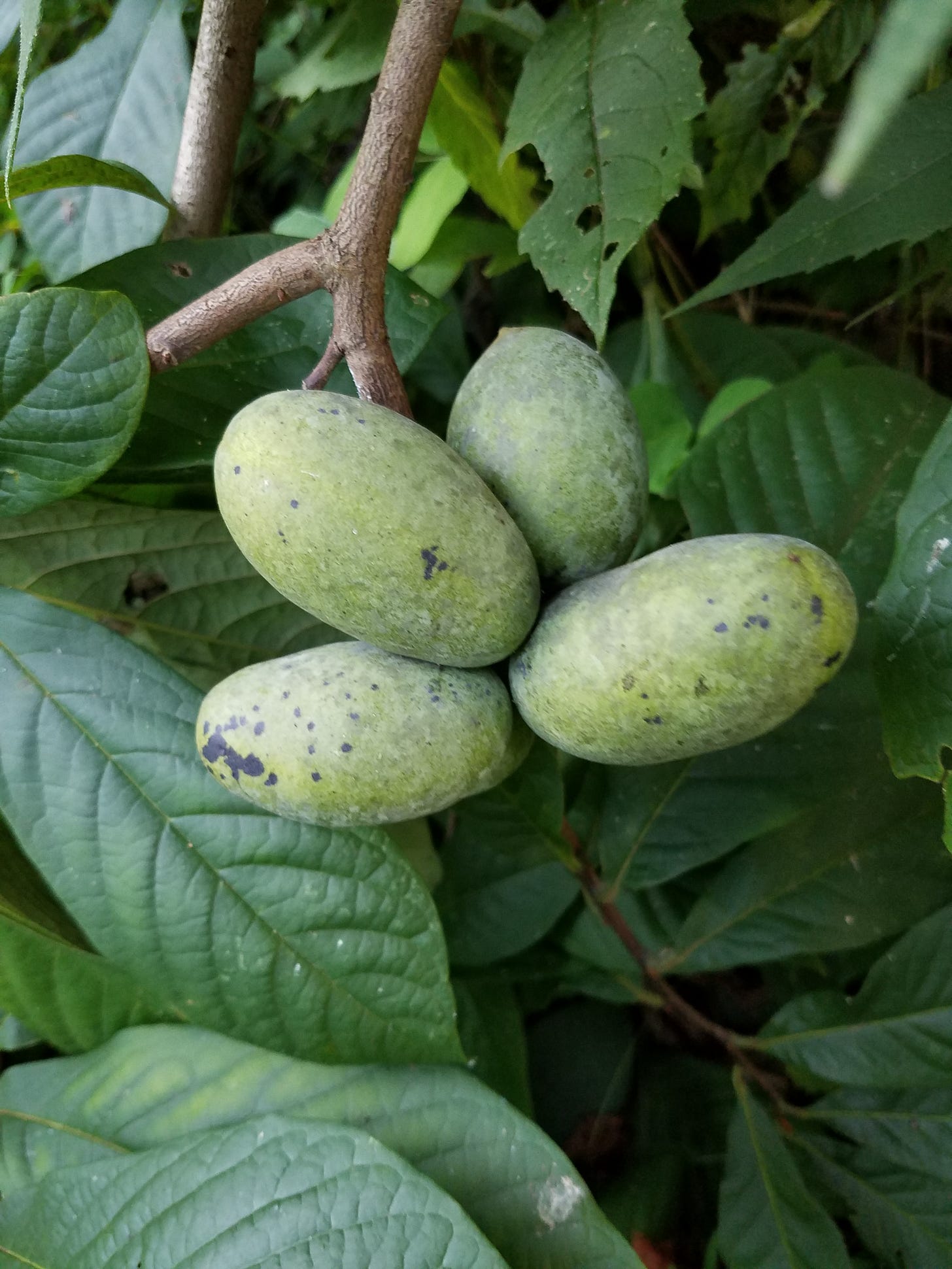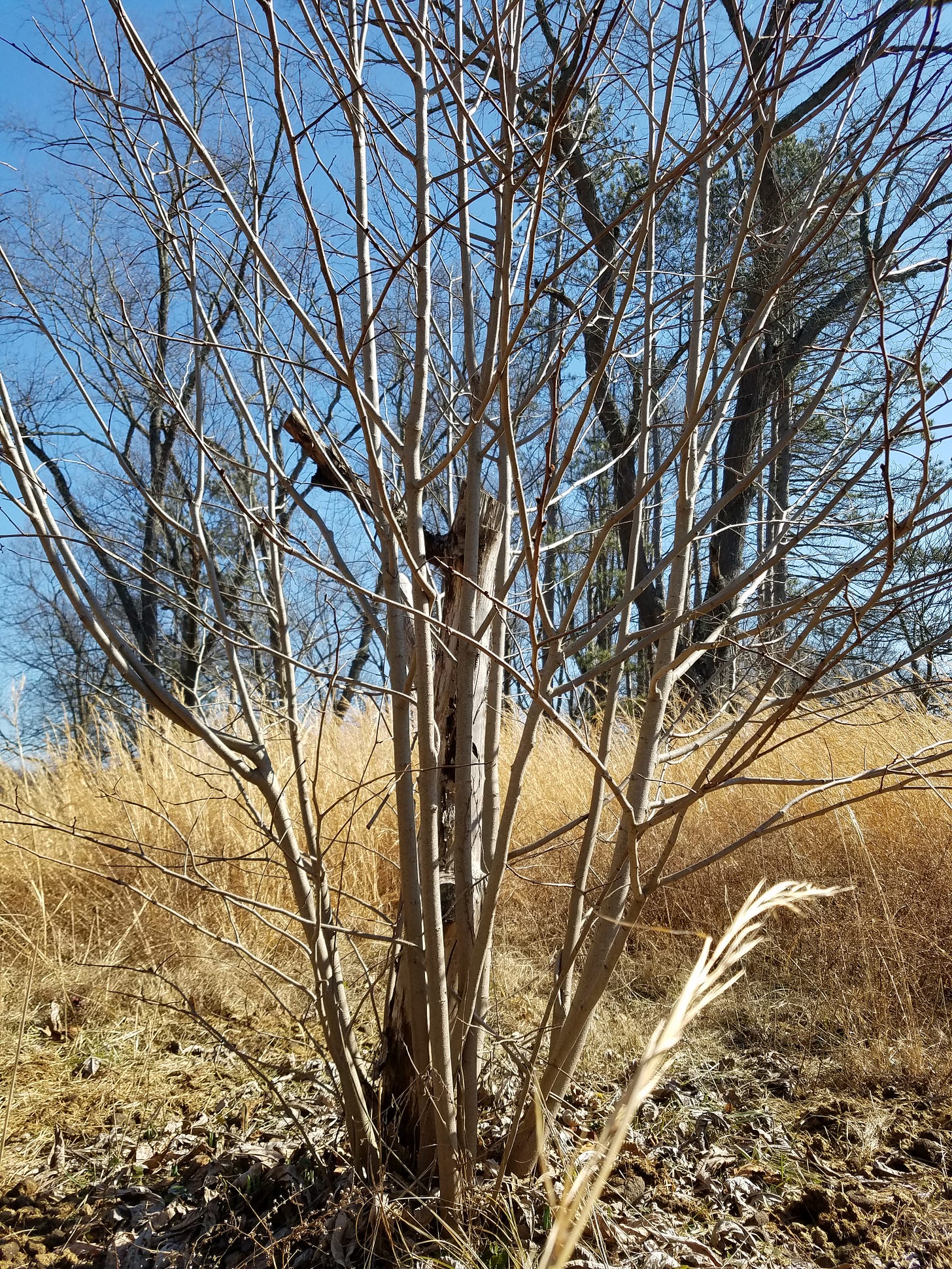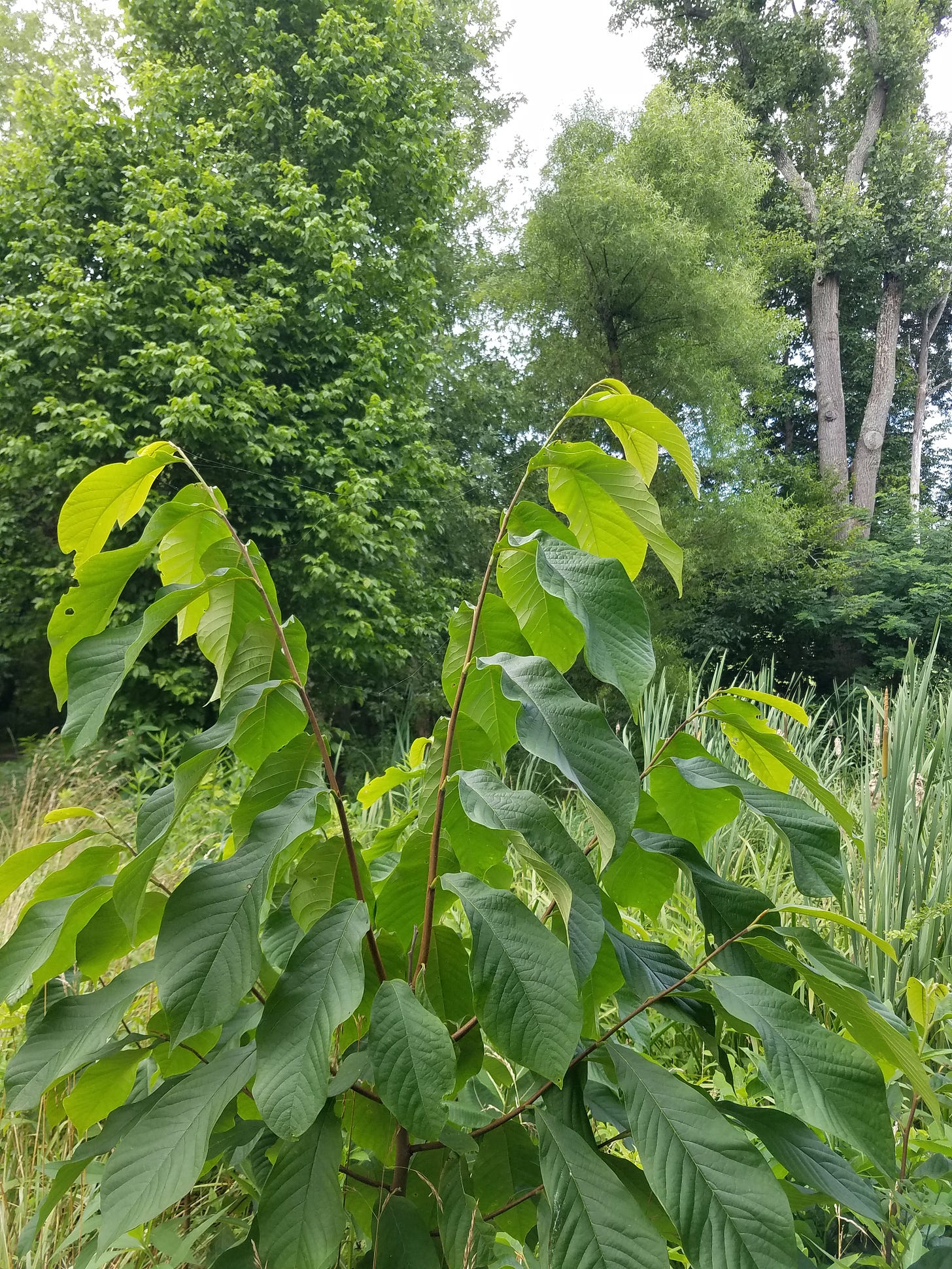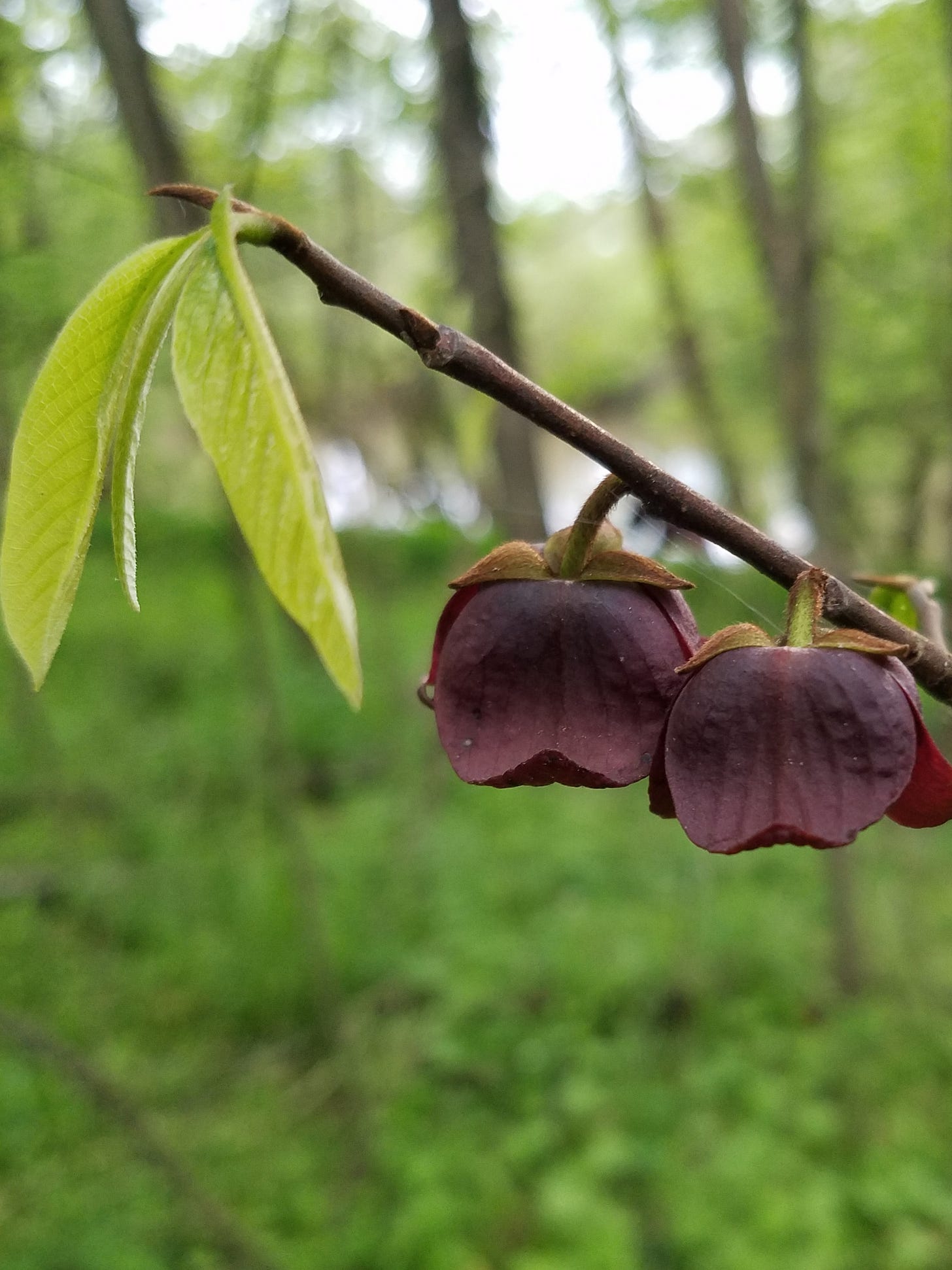The Rise of the Pawpaw
Observations and speculations on a fascinating tree
In the last few years it seems to me that there has been an explosion in growth of pawpaw trees on the farm. Suddenly they are everywhere--in the damp shade along the river where one would expect to find them, but also on the drier slopes. They are in the orchard, on the steep bank behind the house, and scattered throughout the former cornfield. What occasioned this sudden burst of growth? Part of the explanation is simply that they have always been bountiful, but since I became interested in them I notice them much more. There really are more of them in certain areas though, because their habitat increased when the old cornfield reached the point at which it was ripe for colonization by this fascinating tree. There's another factor as well: the destruction wrought by a small beetle that first came to the state of Ohio two decades ago.
If you live in the eastern U.S. and pay attention to news of the natural world, you no doubt know of the emerald ash borer (EAB.) I've written about the effects of this insect on the farm here so check it out if you're unfamiliar with the bug. TLDR? The synopsis: larvae of Asian insect kills millions of ash trees which opens up space and sunlight for surrounding trees to colonize. As an understory tree spread throughout the woods already, and able to tolerate sun, the pawpaw was perfectly suited to take advantage of the gaps created as the ashes fell. The fact that it propagates itself mainly vegetatively means that it simply needed to send up suckers in the newly available open spaces. Though invisible to us aboveground creatures, space underneath the soil surface was created as well, as ash roots decayed and left moist, nutrient-filled pockets for pawpaw roots to occupy.
Because pawpaws spread by root suckers to form colonies, they are uniquely equipped to exploit gaps in the forest created by disturbances such as EAB causing mass die-off of ashes. But what about moving into a brand new area like abandoned agricultural land? Pawpaws have a reputation for being primarily shade-loving understory trees that lurk in moist flood plains. The poor soil of played-out cropland seems an unlikely spot to find thriving pawpaw patches. Contrary to expectations, there are dozens of young trees popping up where previously only blackberry brambles and goldenrod grew. Though neighboring woods contain many pawpaw trees, they produce few fruits, which is common for clonal stands that lack nearby pollenizers. For this reason it seems unlikely that the cornfield saplings grew from seeds. The alternative explanation is that they are extensions of existing patches, formed by questing roots attracted to the possibilities of an open field. While this seems more plausible, it is nevertheless amazing to me since it means that pawpaw roots traveled distances of perhaps 50 yards from established stands. I haven’t come across any research yet that covers how far a single individual tree can spread, but I wonder if the entire pawpaw population on the farm contains only a few individuals, and the majority of the “trees” are multiple stems of the same plant.
I enjoy the fruit if the pawpaw, but my main interest is use of the tree in ecosystem restoration. After observing the behavior of this tree as it moves into spaces created by disturbances, I have come to view it as more of a pioneer species that I had previously thought. Sycamores, cherries, tulip poplars, pines, and crabapples are also colonizing the old cornfield, but as they spread by seed, their modus operandi differs significantly from that of the pawpaw. These trees appear here and there, wherever a seed fell and found enough moisture and organic matter to get a start in life. In contrast, the pawpaw dominates. This tree seems to have a superior intelligence that allows it to seek out and utilize resources such as light, space, and nutrients as they become available. The prime example on the farm of the pawpaw's amazing abilities is the colonization of a dead apple tree.
Apparently ground compacted from mowing poses no challenge for pawpaw roots as they move into new territory. Originating from a colony on a wooded bank that borders the orchard, this new grove erupted around the stump of an apple tree. We don't use a string trimmer to remove grass near tree trunks; consequently the pawpaw shoot emerging near the trunk remained unmolested. In a few short years the transition was made from a diseased apple with a short pawpaw stem at its base, to what you see in the photo. The plan now is to stop mowing within eight feet of the cluster of stems in order to create a grove of pawpaws within the orchard. We've already been rewarded with five or six new stems within this protected space.
In reading about pawpaws I've seen mention of use of the plant for stream bank restoration. Living as we do in a wide bend of a river prone to flooding, I'm very interested in this subject. We routinely joke about property taxes not taking into account land lost to slippage. Sinkholes are common here, and downpours during storms are becoming more intense, if not more frequent. Our closest neighbor maintains a ridiculously large front lawn that slopes toward us and, being severely compacted from decades of mowing, channels rainfall directly to us like a paved hillside. Long story short, erosion is a potentially devastating problem here on the farm.
The long-term, low-cost, labor-nonintensive solution to this problem is trees, specifically their roots. Pawpaws have unique fruit and lovely foliage, but it is the part we cannot see--the root system--that most fascinates me. What amazing network lurks below the surface I can only imagine. But I don't have to be able to see it to understand the benefits of this sprawling metropolis of roots which literally holds land in place. Undoubtedly the the maples, cherries, and tulip poplars play important roles as well. I envision their root masses as dense and stable units spaced at intervals, with pawpaw roots spread throughout all like an interwoven blanket. Humans usually admire the above ground portions of trees for their towering majesty; I appreciate the underground parts as well that keep the land from disappearing down the river.
There's much I would like to know about pawpaws. How large can a single colony grow? How far do roots travel from the original plant? Do pawpaw groves move across the landscape, invading new territory and allowing older parts to send nutrients to the leading edge, then die off? Do certain trees reach heights of 30 feet by deciding to put all their energy into one trunk, or by using suckers to harvest sunlight and send sugars to the mother tree? Do they communicate and share resources with other species using the fungal network? Most pawpaw research that I have come across concerns development of cultivars for fruit production. Maybe widespread interest in the fruit will stimulate research into other aspects of the nature of this plant so these questions can be answered. Meanwhile I look forward to spring and more opportunity to observe this enchanting plant.


